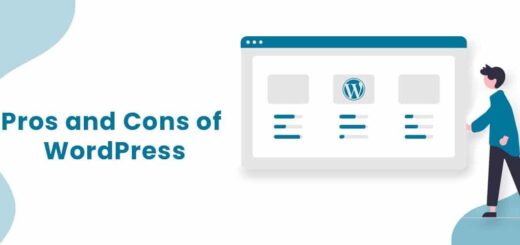What Are The Different Types of WordPress Themes?
A design layout that is utilized for styling all of the front-end components of your WordPress website is referred to as a WordPress theme. In general, it determines the aesthetic appearance of your website as well as the manner in which your content will be presented to the users of your site.
When you modify your theme, you also modify the front end of your website, which means `stand out from the competition if we install one of the available themes and configure it correctly.
What Does a WordPress Theme Do?
WordPress themes allow website owners to build websites without having to write any code from scratch. Theme activation is as simple as downloading it from the WordPress directory, buying it from a third-party vendor, and uploading the file to the relevant location on your WordPress admin panel.
Utilizing a theme’s capabilities, which could include the following, can drastically alter the look and feel of your website:
- Several menus for navigation.
- Personalized headers
- Backgrounds that can be changed.
- Sidebars.
- Posting styles.
A default theme that is meant to be simple and light will already be placed on a brand-new WordPress website. You can use it as-is or swap it out for a different free or premium theme. Some WordPress hosting companies include free WordPress themes as part of their packages. (WordPress Free VS Premium Themes: What Should You Choose?)
Because each of the templates frequently caters to a specific aesthetic and function, be aware that if you switch WordPress themes, the design elements may experience significant changes. For example, some might work better for websites that are more sophisticated than corporate sites, while others might be perfect for portfolios that are rather simple.
When the default setting is active, users can only use one theme at a time. You can activate several WordPress themes at once by installing a plugin like Multiple Themes.
Basic WordPress Theme
Let’s get started with the most basic idea of them all, which is the WordPress theme. As I was saying earlier, the look of our WordPress site is determined by the theme we choose. According to the official documentation, a theme is a collection of files that describe the HTML templates that will be utilized to render the contents of our blog. These files also include other elements that are common to websites in general, such as stylesheets, JavaScript files, and so on.
Premium Themes
Checking out premium marketplaces is yet another choice you have for locating an exceptional WordPress theme to use on your website. Since you are paying for them, you may anticipate (and even demand) maintenance and updates from the developer. Premium themes are, in essence, the same as the ones that can be found in WordPress.org. The difference is that premium themes come with certain additional guarantees.
The fact that Paid WordPress themes can be used for a variety of different purposes is a characteristic that they all share. Simply said, a multipurpose theme is a WordPress theme that looks and acts like a standard theme but comes packed with a ton of extra features that make it suitable for a wide variety of purposes. Someone working with a limited budget who wants to make absolutely certain that they will be able to accomplish anything they want with their theme (price tables, product presentation, feature listing, testimonials, team, etc.) would find these themes to be of great assistance. Nonetheless, there are two major negatives to consider
Because these themes are packed with so many features, there is a good chance that you won’t make use of all of them. This indicates that you will be utilizing a theme that is both complicated and resource-intensive, which may result in some performance concerns.
Locking in on the theme The most significant danger associated with these kinds of themes is that we may wind up using all of its features, and then, if and when we decide to switch themes, we may find that we are unable to do so because we have become dependent on those features. Themes that can be used for a variety of purposes make it simple to get started, but also make it extremely challenging to advance.
Personalization and Child Theme
Up until now, we’ve been discussing standard themes, but the ecology of WordPress themes is considerably bigger and more complicated than that. When it comes to WordPress themes, there are a few quirks that are essential for you to be aware of in order to comprehend precisely how they function. One of these anomalies is the idea of adult themes being used in children’s media.
Because WordPress is open source, which you are already aware is one of the platform’s many strengths, nobody can prevent you from exploring the inner workings of your theme and customizing it in any way that you see fit. You have the ability to do things such as insert a tracking script in the header. php file of your theme if that is something you wish to do. If you want to change the template that is rendered when a blog post is displayed, you are free to do so. You also have the ability to include a new sidebar in the footer of your website, if that is something you would like to do.
Starter Themes to Serve as a Framework
Now that we are familiar with what WordPress themes are and how we may modify them, it is time to discuss the process of creating a theme, which will take a couple of minutes of our time. You can obviously make a new theme from scratch, but rather than doing that, I suggest you choose either a starting theme or a framework theme. While it is possible to make a new theme from scratch, I do not encourage doing so.
As we have seen in the past, a theme is a collection of files (templates, stylesheets, scripts, and the like) that are used to alter the way that our website appears. Creating a theme from scratch requires us to organize the directories and files that will make up its structure before we can get anything to function properly. This takes a lot of time and there is a lot of repetition involved.
With the help of a beginning theme, we have access to a more or less fully-functional framework from which we may launch the development of our own theme. There are a lot of beginner themes to choose from, but Underscores is one of the most popular starter themes out there, and it’s also one of the most valuable. This theme is really simple, and it is not designed to be used on any website in its current form after it has been distributed. Instead, you are intended to make use of it as a foundation for developing a subject that is unique to you.
Themes That Come With a Page Builder
Themes that contain a page builder are those that come with an intuitive tool that allows users to construct pages graphically without the need for any knowledge of coding.
Individually Tailor-Made Themes
When looking for a theme in WordPress, we should also think about the prospect of commissioning a professional team to create a bespoke theme for us. This is another alternative that we should think about. We have already shown how we can do it ourselves in this post (using starting themes or framework themes), but the end result would definitely look slightly worse than what we would get if we hired a professional to do it for us.
Themes that are compatible with several other platforms such as WooCommerce, BuddyPress, and BBPress.
If your website is more than just a website with a simple blog and includes features such as an online store that is powered by WooCommerce, forums that are powered by BBPress, or even a small social network that is powered by BuddyPress, then you definitely have a complex WordPress installation, and because of this, you need to make sure that the theme you choose is compatible with all of these features. If you don’t, well, you run the danger of having your website come off as unprofessional.
Some latest WordPress theme niches as of 2023 include:
Multi-Purpose: These are versatile themes that can be used for various types of websites, such as portfolios, blogs, business websites, and e-commerce sites.
E-commerce: These themes are specifically designed for online stores, with features such as product catalogs, shopping carts, and payment integrations.
Blog: These themes are optimized for bloggers and content creators, with features such as post formats, social media integrations, and customization options for the blog layout.
Portfolio: These themes are perfect for creative professionals, such as graphic designers, photographers, and artists, to showcase their work.
Business: These themes are designed for businesses and corporations, with features such as custom post types, homepage customization options, and integrations with business tools.
Education: These themes are designed for educational institutions, with features such as course management, events calendars, and student registration forms.
Non-Profit: These themes are designed for non-profit organizations, with features such as donation forms, event management, and advocacy tools.
Medical/Health: These themes are designed for medical and health websites, with features such as appointment booking systems, medical services, and patient management tools.
Also Read About – Benefits of using premium wordpress themes
Wix to WordPress: A step by step guide to migration



